
The Loreto Region, with its capital Iquitos, is located in the Amazon, which takes its name because it is made up entirely of the Amazon basin that gives rise to the Amazon River, a natural wonder and by far the most megadiverse life basin on the planet and whose scope covers a significant portion of continental territory in South America, shared by several countries and therefore constitutes a fundamental life zone for life on the planet.
The Loreto Region covers an area of 368,852 km2, being the first region with the largest extension in Peru, representing 28.7% of the national territory and has 3,891 km of international borders with three countries: to the northwest with Ecuador, to the northeast with Colombia and to the east with Brazil; this extension represents 38% of the total borders that Peru has; said borders are part, in their entirety, of the Amazon, so their access is difficult and in some cases non-existent. It is bordered by Ecuador and Colombia to the north, Brazil to the east, Ucayali to the south, and the regions of San Martín and Amazonas to the west.
This part of the Peruvian Amazon is home to one of the largest hydrographic systems in the world, which begins in the Andes mountain range, forming the majestic Amazon River, the largest in the world, which rises from the confluence of the Ucayali and Marañón rivers, near the city of Nauta. This region also has great biological diversity (ecosystems, species, and genetic material), beautiful natural landscapes, and an indigenous population made up of various ethnic groups, which together make it one of the most interesting tourist attractions for national and foreign tourists.
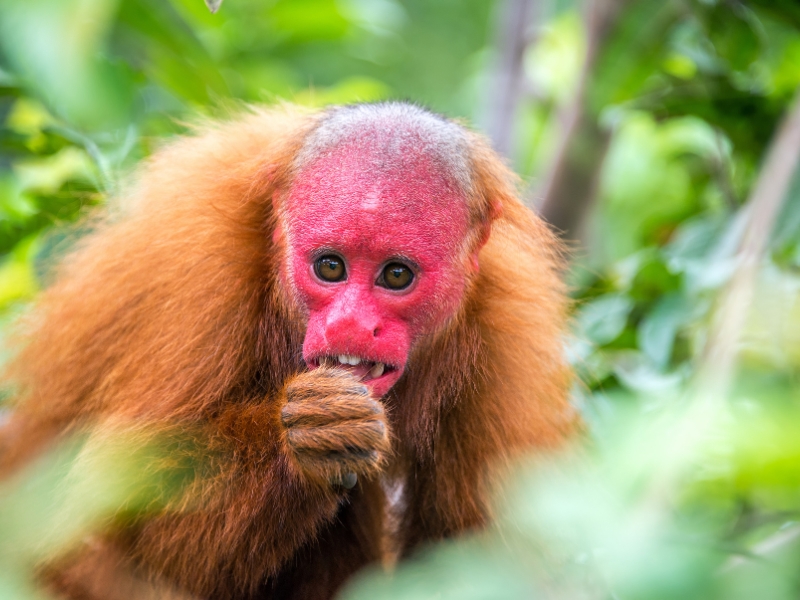
Peru has the privilege of possessing part of the Amazon, the largest plant formation on Earth. The tropical forest is the most complex of the planet’s large biomes and is home to more than half of the existing flora and fauna. Those of the New World, called Neotropical, have a great diversity and richness of plant species.
The mighty rivers, some with white water and others with black water, form impressive rapids and gigantic lagoons in places so inaccessible that few have been able to know them. This diversity of environments and the climatic conditions that occur in the basin of the largest river in the world, generate flood and dry seasons that allow the existence of such a wide, varied and unique fauna and flora, which are home to thousands of species yet to be discovered.
When evoking the tropical rainforest of Iquitos, images of a lush jungle emerge, with a canopy closed by the tops of corpulent trees from which hanging vines intertwine and at ground level an infinity of plants, some with giant leaves like banana trees and palms: stories of tribes that have lived far from our civilization and of mysterious beings who inhabit the thicket where the exhausting heat, the permanent noise of parrots and monkeys and the stalking of poisonous snakes, wild animals.

The Pacaya Samiria National Reserve is the second largest protected natural area in Peru, covering an area of 2,800,000 hectares. The Reserve is also called “the jungle of mirrors” because the jungle is reflected so clearly in the dark waters of its rivers that it gives visitors the sensation of sailing on endless mirrors. The Pacaya Samiria Reserve is highly valued for its enormous biodiversity of flora and fauna and its incomparable natural beauty. For this reason, it is a potential source for research studies and observation of wildlife, especially of certain endangered species. But the Pacaya Samiria Reserve is not only that, but a great magical and unexplored territory that each of us is invited to discover, as it offers exciting adventures once one is immersed in it.
Hiking and fishing are among the activities that can be done here, since you can observe an immense variety of fauna such as: the pink dolphin, the gray dolphin, the yellow-fronted spider monkey, the giant otorongo, the red deer, the maquisapa, the coto monkey and the woolly monkey, the white heron, the ash-colored heron. Among the reptiles, the charapa turtle, the black lizard and the white lizard stand out. You can also find the Paiche, which is the largest freshwater fish.
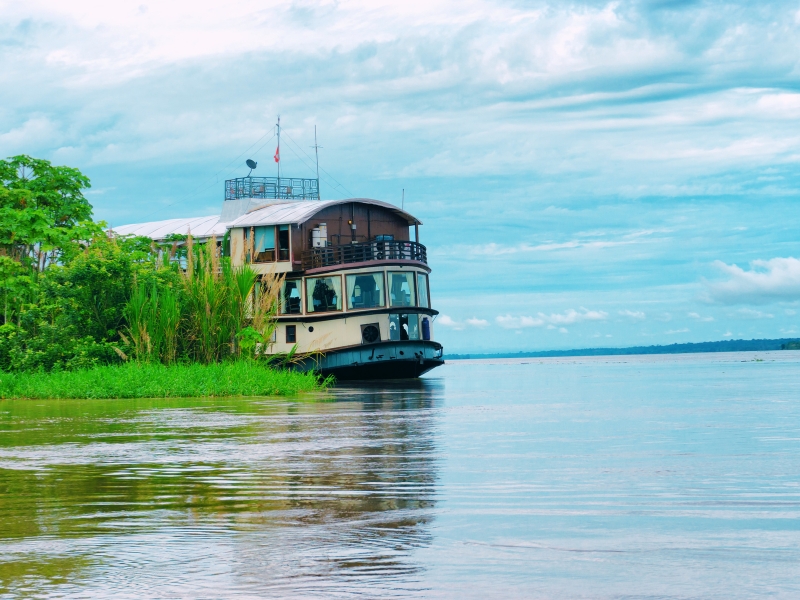
The Amazon River rises in the Andean mountain range and collects water from nine nations before reaching the Atlantic Ocean. The Amazon basin’s river system is over 1,000 km long and is home to more than 2,700 species of fish, which represents approximately 8% of the world’s fish species, which hide beneath its nutrient-rich brown waters. The Amazon River is considered the world’s largest and second longest river. Its wonderful beauty, mystical, bewitching forests and abundant wealth make the Amazon rainforest considered the lung of the world and one of the most important natural attractions in the world.
It is a navigable river with more than 500 tributaries, its average depth is 50 meters and its width varies between 4 and 6 kilometers, providing the opportunity to take unforgettable boat trips. You can opt for a multi-day trek that will take you to riverside villages and bird observatories, or enjoy a relaxing boat trip along the river, where you can admire the beauty of the jungle and its wildlife.

The Allpahuayo-Mishana National Reserve is located in the northeastern jungle of Peru, in the Department of Loreto, specifically 25 km southwest of Iquitos. It is surprising for its incredible variability of ecosystems and its very high levels of biodiversity, concentrated in a relatively small area. In its almost 60 hectares it houses 522 species of butterflies, 1,729 species of plants, 83 amphibian species, 475 species of birds (more than half a dozen of which are only found in the white sand forests and known in Peru only from the Nanay basin), 120 species of reptiles (a world record) such as the charapa, taricaya, motelo, black caiman, white lizard, smooth-fronted lizard, etc.; 127 species of fish; 145 mammals such as the manatee, giant otter, sachavaca, armadillo, peccary, deer, majaz, anteater, bats; 477 birds such as ducks, macaws, parrots, partridges and paujiles; and a great diversity of primates such as the maquisapa, choro, squirrel, huapo, tocón, machin, etc.
The area is home to, among its more than 1,900 plant species, nearly one hundred species of rare, endemic or very restricted distribution plants. This, without a doubt, constitutes another of the treasures of Allpahuayo-Mishana, since 900 types of these plants are medicinal. For example, the so-called cascarilla is used against malaria, the ojo de Vaca (a vine) is used for epilepsy, the abuta for diabetes, the amargón against malaria and the mucura as an anticancer.
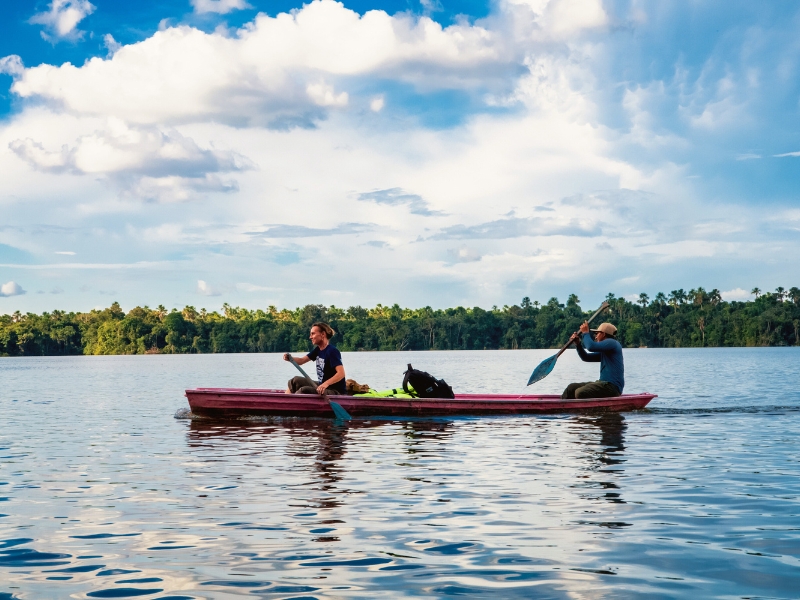
The Quistococha Tourist Park, located 13 km south of the city of Iquitos, is considered one of the most notable tourist landscapes in the region with its white sand beaches surrounded by large palm trees that make the Amazonian flora a unique landscape. Here you can enjoy a picnic, take a rowboat ride, or appreciate the wild fauna and flora that surrounds this site.
Very close to Quistococha you can tour the Botanical Garden. This forest farm houses multiple ornamental, timber and fruit species, in addition to the medicinal plants that the site offers. You can also visit the Quistococha Zoo. Here live about 150 wild animals, in preserved and large areas, in addition to the 70 rescued Amazonian species. You can also visit the fish farm.
If what you are looking for is silence and peace, during the week the park is practically empty. If, on the other hand, you prefer to enjoy the tourist landscape in a community, it is best to undertake the visit during the weekend. Given the size of the park and the amount of information available about its tourist landscapes, it is worth hiring a local guide to make the experience richer.

Monkey Island is a 450-hectare piece of land filled with wild vegetation. Here, for two decades, a group of natives, with the help of foreign volunteers, have dedicated their days to protecting seven species of monkeys that survived the deforestation of their natural habitat and illegal hunting, surrounded by the best tourist landscapes of Iquitos.
Since its creation, the objective of the refuge is to take care of the monkeys and allow them to reintegrate into the jungle once they are healthy. Visitors can tour the island, learning about its history and enjoying the wild charms of the natural environment. The species that can be observed are the stump monkey, the howler monkey, the spider monkey, the lion monkey and the choro monkey, one of the friendliest species.
There you can hold a monkey during the tour. Some monkeys let you pet them and others dare to be held by the visitor throughout the tour. Enjoy the sunset. Located northwest of the tourist city of Iquitos, the island is truly a strategic point for this time of day.

Known for its dark waters, tributaries of the extensive Nanay River, 20 kilometers from the city of Iquitos, Lake Zungarococha is born, a populated center with 800 inhabitants that is a great attraction in the tourist options of Peru and one of the most chosen destinations by locals and foreigners from all over the world.
As part of the district of San Juan Bautista, in the province of Maynas, this body of water is presented as a favorite in the options of all those travelers who seek tourist landscapes in the extensive department of Loreto. Optimal for leisure and recreation, Lake Zungarococha offers calm waters ideal for walking and swimming.
The natural environment of this corner of the world that is embraced by a great ecosystem typical of the Amazon to give peace and silence to enjoy one of the best tourist landscapes in Iquitos. You can take boat, canoe and glider rides. For those who have already explored the tourist landscape, fishing is a good option in this Peruvian nature reserve.

Here, precious objects from the jungle are studied and displayed, as well as their historical, artistic and scientific data, reflecting details that date back to pre-Columbian times and cover a historical line that reaches up to the present. Discover the Amazonian culture. Learn about the way in which its people relate to each other and to the Amazon forests. See pieces from other tribes. Here you will find original objects from the Waiwai tribe of the Guyanas and the group of families known as the Kaiapo tribe, among many others.
Explore the rituals of the Amazon basin. Learn about the historical celebrations of the triple border that forms Peru, Brazil and Colombia. Let yourself be captivated by the anthology. You will find indigenous ornaments, ancient props and a collection of musical instruments from different periods. Appreciate the display of archaeological remains. Discover the material remains that speak of the past and don’t miss seeing the funerary urns that were once found in the heart of the Pastaza River. Admire the ethnographic exhibits. The museum’s display cases exhibit a varied collection of artistic works made with feathers and objects typical of religious ceremonies.

Located in the heart of Iquitos, construction began in 1911 after the demolition of the old temple. The medieval Gothic style of this Metropolitan Cathedral is admired every day by visitors who seek to be amazed by the important works of art that line the walls of its interior. The interior preserves large stained glass windows in bright colors and works of art that denote indigenous culture. Considered by foreigners and national tourists as a true jungle charm, this basilica of great value stands out among all the cathedrals in Peru, both in its design and its architecture.
On the outside you can see a Swiss clock on the main tower, the well-known bell tower and a metal cross on the highest vertex of the structure. Here you can see the commemoration of the Brotherhood of the Daughters of Mary and an important piece that shows the Virgin Mary on the Amazon River, facing an ancient and original city of Iquitos.
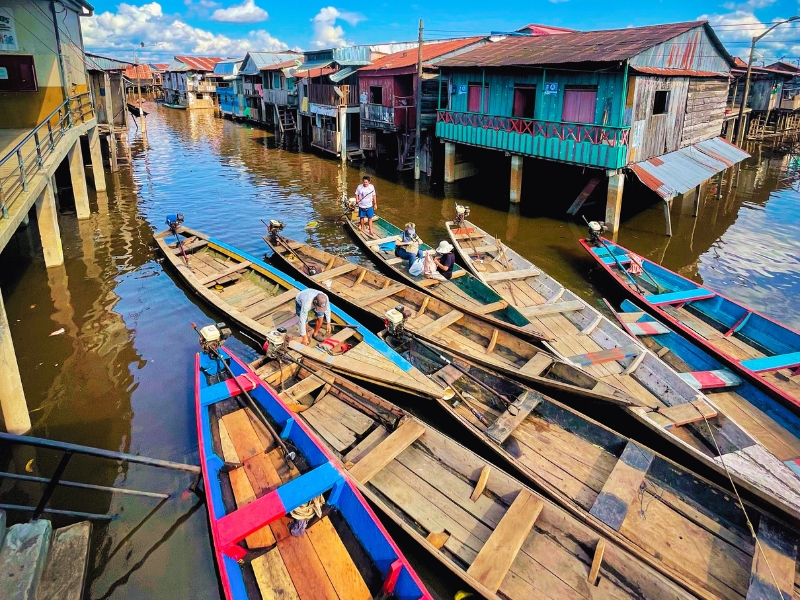
The picturesque, humble and authentic Belén neighborhood is one of the most popular tourist spots in Iquitos. During the rainy season, it is possible to tour the neighborhood by boat or canoe and discover a way of life on the water.
It is divided into Alto Belén and Bajo Belén, this neighborhood of great tourist interest. Here, it is possible to establish close contact with the customs and landmarks of the local community, which lives daily with hundreds of tourists who move away from the natural landscapes of the jungle to approach this part of the city where it is possible to get to know a rhythmic and urban scene that has its own aromas and sounds.
The alley Paquito offers hundreds of medicinal plants and aphrodisiac liqueurs, as well as talismans, relics and amulets that promise protection and healing. Buy typical products. Try the natural cigars that the natives themselves prepare with pure tobacco. There are also those with added aromatics, fruity flavours and spices from the region.
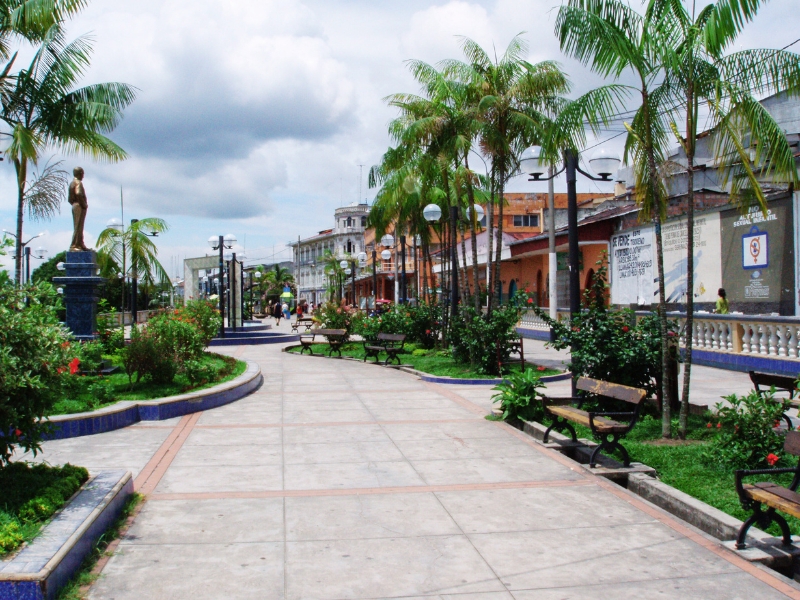
This large avenue that some call a boulevard is located in the city of Iquitos. On the banks of the Itaya River, the Malecón Tarapacá serves as the main meeting point and is visited daily by both the local community and tourists who visit the city.
For those looking to do tourism in Iquitos, the Malecón Tarapacá will undoubtedly be one of the busiest points to access several of its different plans. This avenue with the greatest cultural diversity in all of Iquitos makes up the Monumental Zone of the city and offers an extraordinary panoramic view of the Belén neighborhood in the distance.
In this small port you can book different tours to tour the city and take boat rides. From this area you can see the most traditional baroque and gothic houses of Iquitos tourism. There is also a craft center where tourists usually buy regional products along about twenty stalls.

Pillpintuwasi Butterfly Farm is the only butterfly farm in Iquitos. This site houses 42 species of butterflies. Among them, the most attractive are the Blue Morpho and the Owl Butterfly. This farm has the particularity of being able to present the complete process of metamorphosis. In addition to the butterflies, here you can see the beautiful red or English monkey and a variety of species such as the otorongo, the two-toed sloth, the sea cow and even a jaguar.
This butterfly farm, whose name in Quechua means “House of butterflies”, is without a doubt a fundamental piece of the virgin forest. Here, every day new visitors witness the energies that are invested in the protection of species, being the site also a temporary custody center, since they receive animals that come from the seizures of the ecological police such as an anteater, alligators, turtles and parrots.
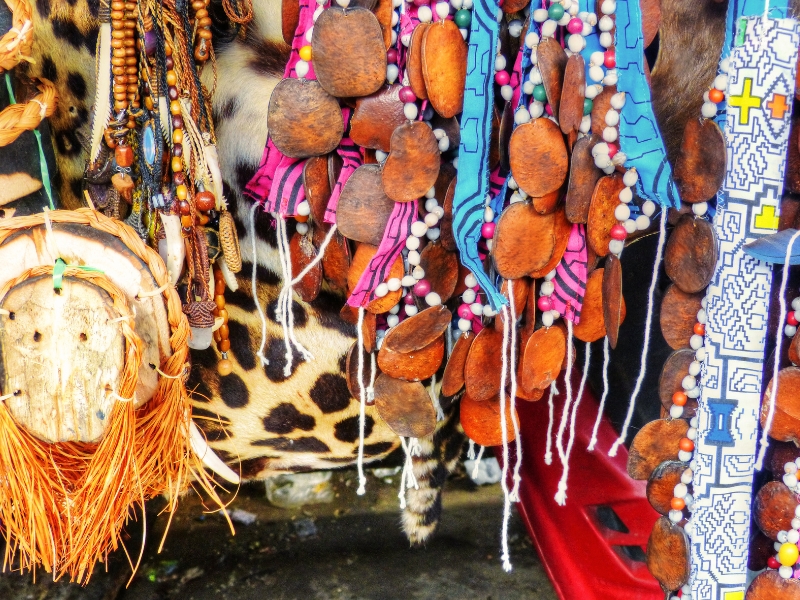
A block from the traditional Plaza de Armas in Iquitos, on the banks of the Itaya River, is this typical jungle market of great tourist interest. The site offers visitors a wide variety of crafts with an Amazonian touch. Here it is possible to find local works such as ceramics with painted drawings and hand-carved wood. In addition, the fair displays multiple statues and masks in all sizes, where Latin features become the souvenir of the tourist who chooses to enjoy the Peruvian landscapes.
Jewelry, fabrics painted with products that nature itself provides and a series of decorative objects, made with elements and resources from the jungle, are the most sold products in this market where the natural environment merges with the community that serves it. A true tourist attraction.
Here you can also request a typical jungle makeup, the face and body makeup will make you feel like one of the community. It is a good way to connect with the native and feel the jungle in your body. A very popular section is the liquor and plant section. This stand offers products with healing powers through roots and climbing plants that combat arthritis, abdominal pain and wounds of all kinds. There are also aphrodisiac and energy-boosting products.

Explore the Manu Amazon Rainforest & Inca Trail hike to Machu Picchu, you will enjoy the best adventures in Peru, exploring amazing inca trail routes and the best amazon wildlife with our local tour guides, in small groups.

Dive deep into the culture and landscapes of Peru with this adventure to Machu Picchu, the Amazon and more. Search for wildlife along jungle trails and rivers in the rainforest from a comfortable lodge then head up into the Andes to Cusco, the capital of the Inca empire.


Your journey to the Tambopata National Reserve offers a great opportunity to discover a lively biodiversity of birds, mammals, reptiles, insects and trees. Record-setting numbers of animal species are concentrated within small areas, and the variety of plant life is greater than almost anywhere in the world.


Explore Manu National Park 5 days, the amazon’s mystery and Live a fascinating adventure to the vast amazon Manu national park , is one of the best places in South America to see a stunning variety of tropical wildlife.

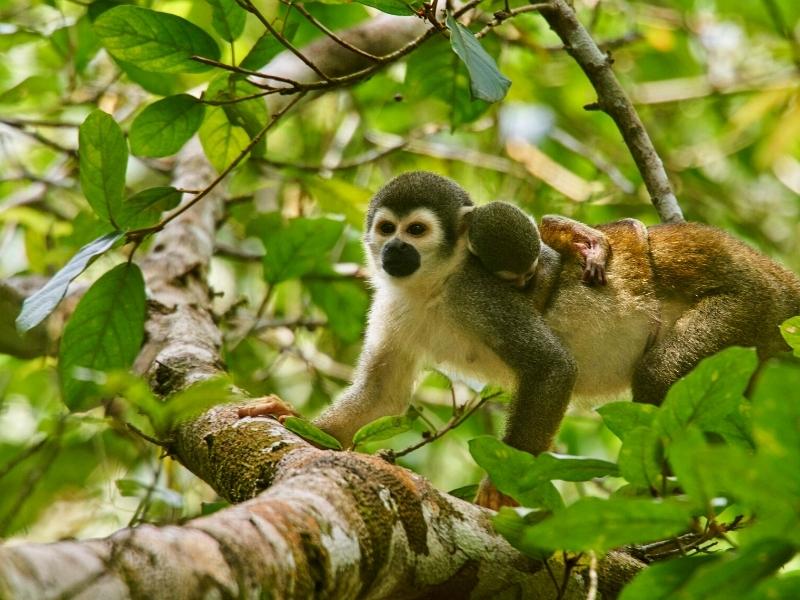
This trip allows you to have one of the best experiences in the Manu National Park which includes the Reserved Zone in only 7 days. It is an ideal way to experience the culture and traditions of local communities and see the distinct species of animals and birds that inhabit here.


The Manu Jungle tour goes to one of the largest life biosphere reserves in the World. You will enjoy wildlife, traditional villages, with the best specialized guides.
